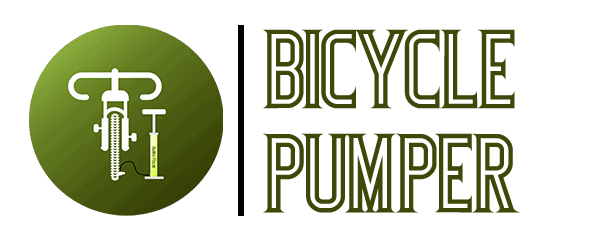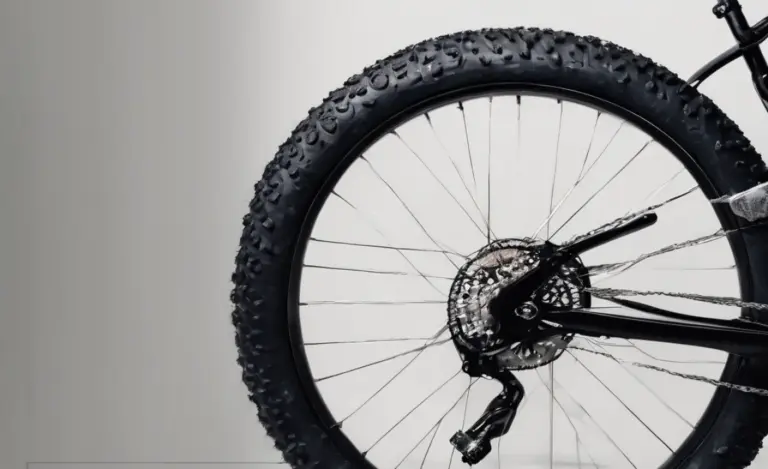CO2 Inflator: Smart Pressure for Your 26″ Tires
Do you know how to pump up your bike tires? It’s super important for a smooth ride. Using a CO2 inflator can be quick and easy. But what is the recommended pressure for 26″ tires?
Getting it right keeps you safe. It also helps you go faster. Let’s find out the best air pressure for your bike!
Key Takeaways
- Always check your tire’s sidewall for the recommended pressure range.
- Using a CO2 inflator can quickly inflate 26″ tires to the desired PSI.
- Under-inflated tires can cause flats and make pedaling harder.
- Over-inflated tires can make the ride bumpy and increase the risk of blowouts.
- Start with the middle of the recommended pressure range and adjust as needed.
Understanding CO2 Inflator Recommended Pressure for 26″ Tyres
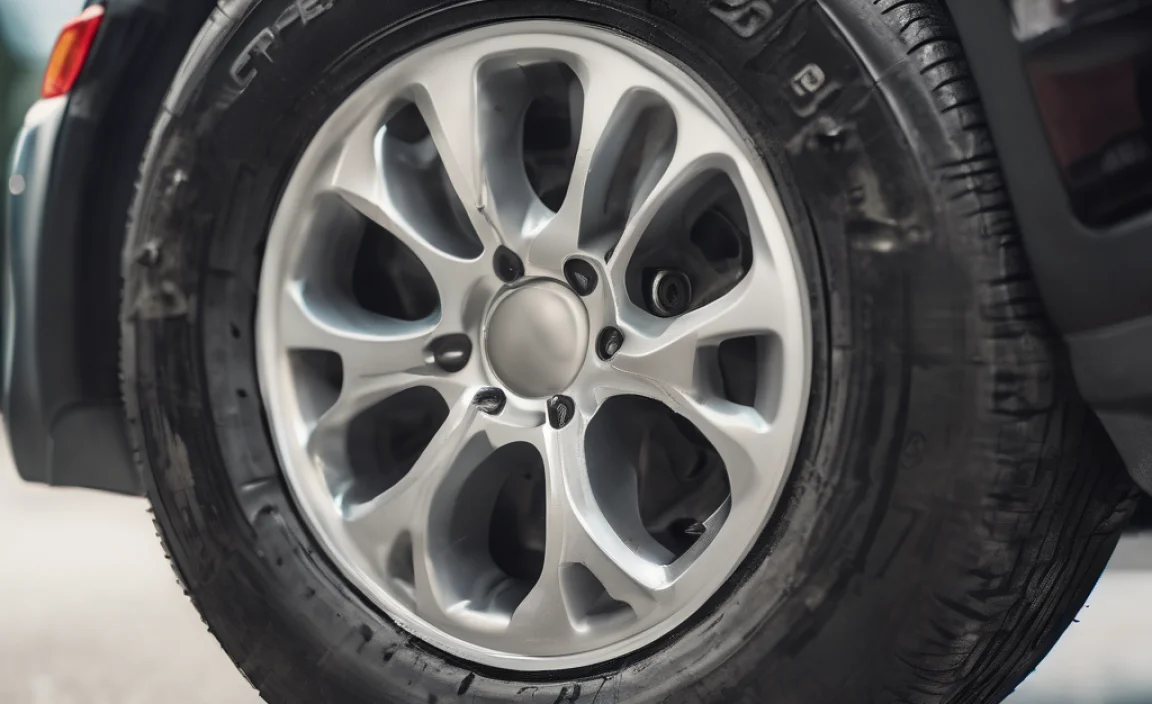
Riding a bike with the right tire pressure is important. It affects how well you ride. It also affects your safety. CO2 inflators are useful tools. They help you fill your tires quickly. But knowing the recommended pressure for 26″ tyres is key. This ensures you have a good ride. It also helps avoid problems. Imagine your tires are balloons. Too little air, and they are floppy. Too much air, and they might pop! The right amount is just right. This keeps you rolling smoothly and safely on your bike adventures. We want to find the sweet spot for your tires. This makes every ride fun and safe.
- Check your tire sidewall for the pressure range.
- Use a pump with a gauge to measure PSI accurately.
- Consider the type of riding you’ll be doing.
- Adjust pressure based on your weight.
- Check tire pressure before each ride.
- Don’t exceed the maximum PSI listed on the tire.
Choosing the right tire pressure is like finding the perfect recipe. Too much or too little can ruin the experience. Think of it like this: if you put too much air in a basketball, it bounces too hard. If you don’t put enough air, it barely bounces. Tires are similar. The recommended pressure ensures your bike rolls smoothly. It also helps you steer easily. Always check what your tire says. Use a good pump. This will help you get the perfect pressure. This way, every bike ride will be fun and safe. Remember, happy tires mean happy riding!
Why Is Tire Pressure Important?
Have you ever tried riding a bike with flat tires? It’s super hard! That’s because tire pressure matters a lot. It makes a big difference in how your bike performs. When your tires have the right amount of air, they roll smoothly and efficiently. This means you don’t have to work as hard to pedal. Proper tire pressure also helps you steer better. You can turn corners easily. Low tire pressure makes it hard to steer and can even cause a flat tire. High tire pressure can make your ride bumpy and uncomfortable. So, keeping your tires properly inflated is like giving your bike a superpower. It helps you ride faster, smoother, and safer.
What Happens with the Wrong Pressure?
Imagine you’re trying to run with shoes that are too big. It’s awkward and you can’t run very fast. That’s what it’s like riding with the wrong tire pressure! If your tires are under-inflated, they can get damaged easily. You might get a flat tire if you hit a bump. Over-inflated tires are also a problem. They don’t grip the road as well. This can make it harder to control your bike. Plus, the ride will be very bumpy. Finding the right CO2 inflator recommended pressure for 26″ tyres is important. It’s like finding the perfect pair of shoes for running. It makes all the difference!
How Does Weight Affect Tire Pressure?
Have you ever noticed how a car sinks down a little when people get in? That’s because weight affects how tires perform. It’s the same with bikes! If you’re heavier, you need more air in your tires. This keeps them from squishing too much. When tires are squished, they create more friction with the road. This makes it harder to pedal. Lighter riders can use a little less air pressure. This makes the ride more comfortable. Think of it like a seesaw. If one person is heavier, you need to adjust the balance. Adjusting tire pressure for your weight helps your bike perform its best. This will give you a smoother and faster ride.
Fun Fact or Stat: Did you know that proper tire inflation can improve your cycling efficiency by up to 10%?
How to Check Your 26″ Tyre Pressure
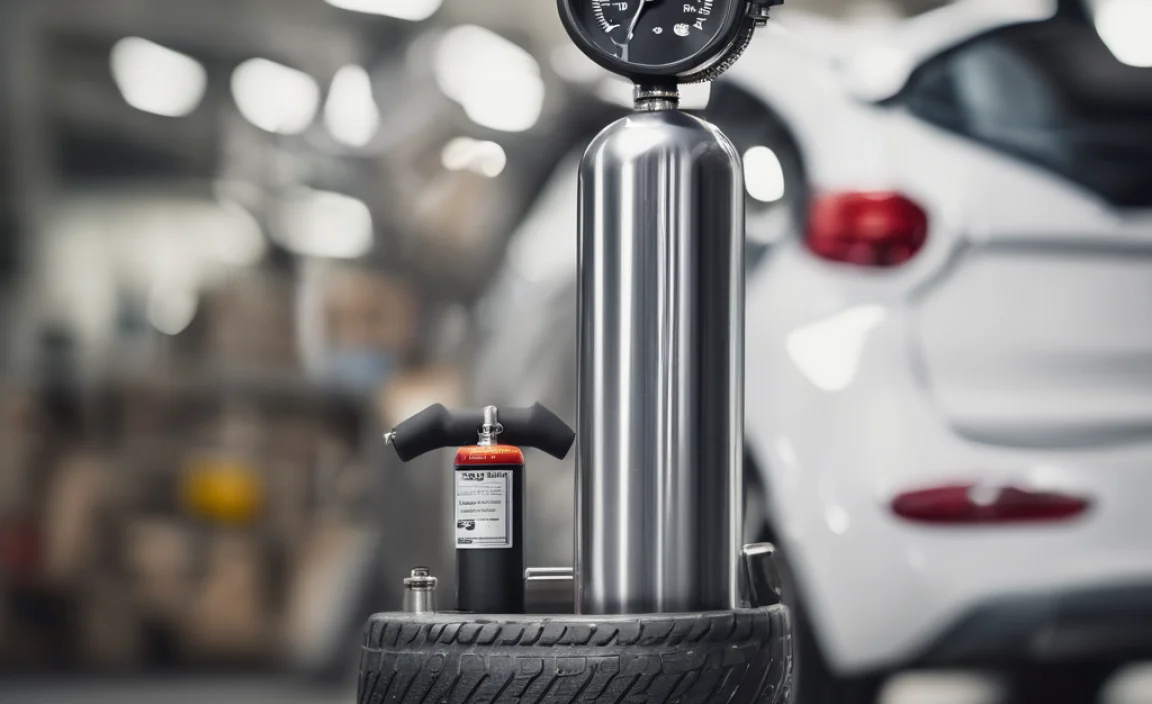
Checking your 26″ tyre pressure might seem tricky. But it’s actually quite simple! You will need a few things. Get a good tire pressure gauge. Look for the recommended pressure range on the side of your tire. This is usually shown in PSI (pounds per square inch). Now, use the gauge to check the pressure in your tire. Push the gauge onto the valve stem. Read the number. If it’s too low, add air with a pump or a CO2 inflator. If it’s too high, let some air out. Doing this regularly helps keep your tires in good shape. It also ensures your rides are safe and fun! Think of it as giving your bike a quick checkup before every adventure.
- Get a reliable tire pressure gauge.
- Find the recommended PSI range on your tire sidewall.
- Remove the valve cap from your tire.
- Press the gauge onto the valve stem firmly.
- Read the pressure displayed on the gauge.
- Add or release air as needed to reach the recommended PSI.
Imagine you’re baking a cake. You need to measure the ingredients carefully. Checking your tire pressure is similar. You need to know the right number. The tire sidewall has this number. It’s like a recipe for your tires. The tire pressure gauge is like a measuring cup. It helps you get the right amount of air. If you skip this step, your cake might not turn out well. Similarly, your bike ride might not be as smooth or safe. So, take a few minutes before each ride. Check your tire pressure. This helps you have the best possible experience. This simple step can make a big difference!
What Tools Do I Need?
To check your tire pressure, you will need a few simple tools. First, you need a tire pressure gauge. You can buy one at any bike shop or online. Make sure it’s easy to read. A digital gauge can be very helpful. Next, you’ll need a pump. A floor pump is best for home use. It’s easier to use than a hand pump. If you use a CO2 inflator, make sure you have extra cartridges. These inflate your tires quickly. Keep these tools handy. This makes it easy to check and adjust your tire pressure. These tools are like a basic kit for your bike. They help you keep it in top shape.
How Often Should I Check?
Checking your tire pressure regularly is important. But how often should you do it? A good rule of thumb is to check before every ride. This only takes a minute or two. It can save you from problems later. Tires can lose air over time. This is especially true if they have a small leak. If you ride your bike every day, check the pressure daily. If you only ride a few times a week, check before each ride. Think of it like brushing your teeth. You do it regularly to keep your teeth healthy. Checking your tire pressure keeps your bike healthy. This helps your rides safer and more fun.
What If I Don’t Have a Gauge?
Sometimes, you might not have a tire pressure gauge handy. What can you do then? One way is to squeeze the tire. If it feels soft and squishy, it probably needs more air. But this isn’t very accurate. Another option is to visit a local bike shop or gas station. They usually have air pumps with gauges you can use. It’s always best to have your own gauge. This way, you can check your tires anytime. Using a gauge ensures you get the right pressure. This keeps your ride safe and smooth. While squeezing the tire is better than nothing, a gauge is always the best choice.
Fun Fact or Stat: Bicycle tires can lose up to 1-2 PSI (pounds per square inch) per day due to the natural permeability of the rubber.
Using a CO2 Inflator for 26″ Tyres
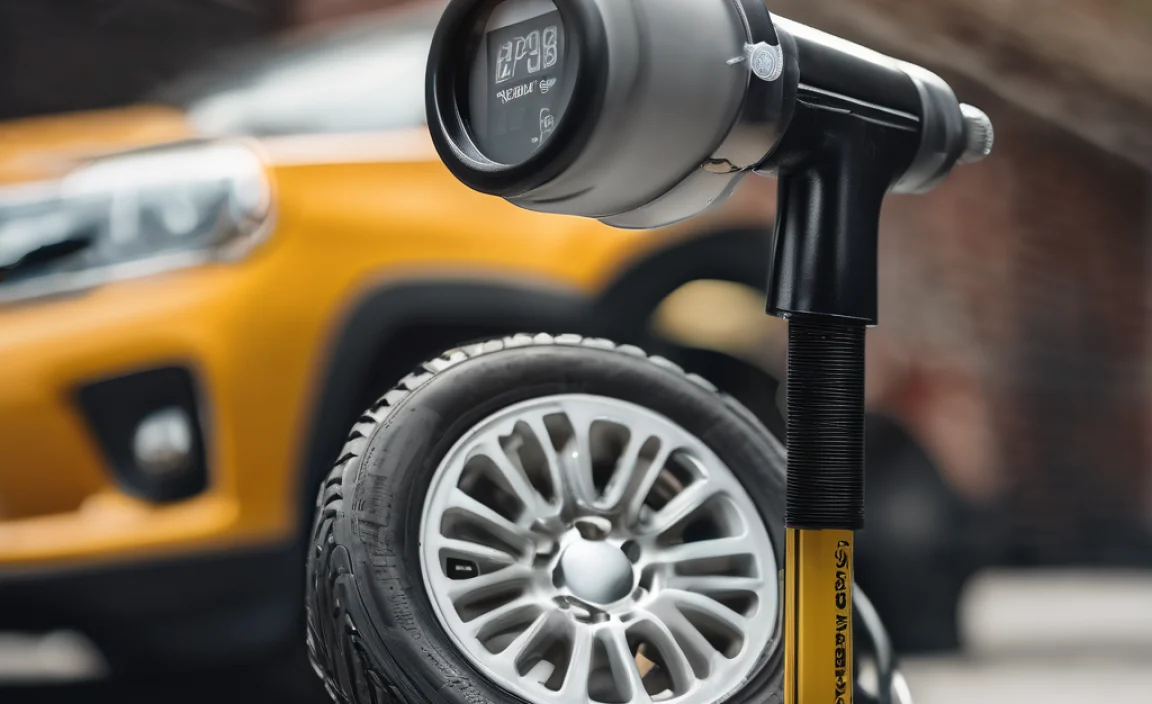
A CO2 inflator is a handy tool. It helps you fill your 26″ tyres quickly. This is great when you’re out on a ride. You get a flat tire. These inflators use small cartridges of CO2 gas. They fill your tire fast. To use one, attach the inflator head to the tire valve. Then, pierce the CO2 cartridge. The gas rushes into the tire. Be careful! The cartridge gets very cold. Follow the instructions that come with your inflator. Using a CO2 inflator can be a lifesaver. It gets you back on the road quickly. This way, you can continue your bike ride without too much delay.
- Read the instructions carefully before using.
- Attach the inflator head securely to the valve.
- Pierce the CO2 cartridge to release the gas.
- Hold the cartridge with gloves to protect your hands from the cold.
- Check the tire pressure after inflation.
- Dispose of the empty cartridge properly.
Imagine you’re in a race. Suddenly, you get a flat tire! You don’t have much time to fix it. A CO2 inflator is like a superhero. It helps you get back in the race quickly. Using a hand pump can take a long time. A CO2 inflator fills your tire in seconds. It’s important to practice using it before you need it. This way, you’ll be ready if you get a flat. Remember to be careful. The cartridges get very cold. Wear gloves to protect your hands. With a little practice, a CO2 inflator can be your best friend on the road.
What Are the Benefits of CO2 Inflators?
CO2 inflators have many benefits for cyclists. One of the biggest is speed. They can fill a tire much faster than a hand pump. This is great when you’re in a hurry. They are also small and lightweight. This makes them easy to carry with you. A CO2 inflator can be a lifesaver on long rides. They are easy to use. Even kids can learn how to use them. They are a must-have for any serious cyclist. Think of them like a quick boost of air whenever you need it. This helps you stay on the road and enjoy your ride.
Are There Any Drawbacks?
While CO2 inflators are great, they also have some drawbacks. One is that you only get one chance per cartridge. If you mess up, you waste the CO2. Another drawback is the cost. Cartridges can be expensive. Using a hand pump is free. CO2 can also leak out of the tire faster than air from a pump. This means you might need to refill your tire sooner. It’s good to know these things before you decide to use a CO2 inflator. They are great for emergencies. But they might not be the best choice for everyday use.
How Do I Choose the Right Inflator?
Choosing the right CO2 inflator can be confusing. There are many different types. Look for one that is easy to use. It should also be reliable. Some inflators have a control valve. This lets you control how much air goes into the tire. This can be helpful. Make sure the inflator is compatible with your tire valves. Some only work with certain types. Read reviews online. This helps you find a good one. The right inflator makes fixing a flat much easier. It’s worth taking the time to find one that works well for you.
Fun Fact or Stat: A single 16-gram CO2 cartridge can inflate a 26-inch mountain bike tire to approximately 30-40 PSI.
Recommended PSI Range for 26″ Tyres

Finding the recommended PSI range for 26″ tyres is important. This helps you ride safely and comfortably. The PSI range is usually printed on the side of the tire. Look for numbers like “30-50 PSI“. This means the tire should have between 30 and 50 pounds of air pressure. The right pressure depends on a few things. These include your weight and the type of riding you do. If you’re heavier, use a higher pressure. If you’re riding on rough trails, use a lower pressure. This gives you more grip. Always stay within the recommended range. This will help you avoid flats and other problems.
- Locate the PSI range printed on your tire sidewall.
- Consider your weight when choosing a PSI.
- Adjust pressure based on the type of terrain.
- Start with the middle of the recommended range.
- Check the pressure regularly with a gauge.
- Never exceed the maximum PSI listed on the tire.
Imagine you’re adjusting the volume on a radio. Too low, and you can’t hear anything. Too high, and it’s too loud. Finding the right PSI for your tires is similar. You want it just right. The tire sidewall is like the radio’s instructions. It tells you the recommended range. Your weight and the terrain are like the music. You adjust the volume based on what you’re listening to. If you’re heavier or riding on rough trails, you might need a higher PSI. Always start in the middle of the range. Then, adjust as needed. This will give you the best possible ride.
What Does PSI Mean?
PSI stands for pounds per square inch. It’s a way to measure how much air is in your tire. Think of it like this: Imagine you have a square inch of tire. PSI tells you how much force is pushing on that square inch. Higher PSI means more air is pushing. Lower PSI means less air. Knowing what PSI means helps you understand tire pressure. When you see a number like “40 PSI,” you know how much air should be in your tire. This helps you keep your tires properly inflated. This makes your rides safer and more fun.
How Does Terrain Affect PSI?
The type of terrain you ride on can affect the best PSI for your tires. If you’re riding on smooth roads, you can use a higher PSI. This helps you roll faster. If you’re riding on rough trails, you should use a lower PSI. This gives you more grip and makes the ride more comfortable. Lower PSI lets the tire absorb bumps better. Think of it like choosing shoes. You wear different shoes for different activities. You wear running shoes for running. You wear hiking boots for hiking. Adjusting your PSI based on the terrain is like choosing the right shoes for your ride.
What Happens If I Exceed the Max PSI?
Exceeding the maximum PSI listed on your tire can be dangerous. It’s like blowing up a balloon too much. It might pop! Over-inflating your tires can cause them to explode. This can happen while you’re riding. This can cause a serious accident. It can also damage your tires. Always stay within the recommended range. Never go over the maximum PSI. This keeps you safe. This also helps your tires last longer. The maximum PSI is there for a reason. It’s important to follow it.
Fun Fact or Stat: The ideal PSI for a 26-inch tire typically ranges from 30 to 65 PSI, depending on the tire type and rider weight.
Different Types of 26″ Tyres and Pressure

There are many types of 26″ tyres. Each type needs a different pressure. Mountain bike tires are wider. They have lower pressure. This gives better grip on trails. Road bike tires are narrower. They have higher pressure. This helps you roll faster on smooth roads. Hybrid bike tires are in between. They have a medium pressure. Knowing the type of tire you have is important. This helps you choose the right pressure. Check the sidewall of your tire. This will tell you the recommended PSI range. Using the right pressure keeps you safe. It also makes your ride more comfortable.
- Mountain bike tires need lower pressure for better grip.
- Road bike tires need higher pressure for faster rolling.
- Hybrid tires need a medium pressure for versatility.
- Touring tires often need higher pressure for load carrying.
- Fat bike tires need very low pressure for sand and snow.
- Always check the tire sidewall for the recommended PSI range.
Imagine you’re choosing shoes for different activities. You wouldn’t wear sandals to climb a mountain. You wouldn’t wear hiking boots to swim. The same idea applies to bike tires. Different tires are made for different things. Mountain bike tires are like hiking boots. They have a wide tread and lower pressure. This helps you grip the trail. Road bike tires are like running shoes. They are smooth and have higher pressure. This helps you go fast on the road. Hybrid tires are like everyday sneakers. They work well for many things. Choosing the right tire and pressure is important. This makes your ride safer and more fun.
Mountain Bike Tyre Pressures
Mountain bike tires are designed for off-road riding. They need lower pressure than road tires. This gives them better grip on dirt and rocks. A typical mountain bike tire might need between 25 and 35 PSI. Some riders even go lower. This depends on the trail conditions. If you’re riding on very rocky trails, lower pressure can help. It lets the tire absorb bumps better. Always check the recommended range on your tire. Experiment with different pressures. This helps you find what works best for you. Remember, safety is always the most important thing.
Road Bike Tyre Pressures
Road bike tires are designed for speed. They need higher pressure than mountain bike tires. A typical road bike tire might need between 80 and 120 PSI. This helps them roll faster on smooth roads. Higher pressure reduces rolling resistance. This means you don’t have to work as hard to pedal. Always check the recommended range on your tire. Never exceed the maximum PSI. This can be dangerous. Experiment with different pressures. This helps you find what feels best for you. Remember, comfort is also important. A slightly lower pressure can make the ride smoother.
Hybrid Bike Tyre Pressures
Hybrid bike tires are a mix between mountain bike and road bike tires. They are designed for riding on both roads and trails. A typical hybrid bike tire might need between 40 and 70 PSI. This gives a good balance of speed and comfort. Hybrid tires are a good choice if you ride on different types of surfaces. They are versatile. Always check the recommended range on your tire. Experiment with different pressures. This helps you find what works best for you. Remember, safety is always the most important thing. Adjust the pressure based on the type of riding you do.
| Tyre Type | Typical PSI Range | Benefits | Ideal For |
|---|---|---|---|
| Mountain Bike | 25-35 PSI | Better grip, absorbs bumps | Off-road trails, rocky terrain |
| Road Bike | 80-120 PSI | Faster rolling, less resistance | Smooth roads, racing |
| Hybrid Bike | 40-70 PSI | Balance of speed and comfort | Roads and trails, commuting |
| Touring Bike | 50-80 PSI | High load capacity, durable | Long-distance rides, carrying gear |
Fun Fact or Stat: Wider tires generally require lower pressure than narrower tires to achieve the same level of comfort and grip.
Adjusting Tire Pressure for Different Conditions
Adjusting your tire pressure for different conditions is smart. It can make your ride better. If it’s raining, lower the pressure a bit. This gives you more grip on wet roads. If it’s hot, the pressure might increase. Check it before you ride. If you’re carrying a heavy load, add more air. This keeps the tires from getting too flat. Think about the conditions before you pump up your tires. This helps you ride safely and comfortably. Knowing how to adjust tire pressure is like knowing how to dress for the weather. It helps you be prepared for anything.
- Lower pressure in wet conditions for better grip.
- Check pressure in hot weather as it may increase.
- Increase pressure when carrying heavy loads.
- Adjust pressure for smooth vs. rough roads.
- Consider the temperature when inflating tires.
- Always stay within the recommended PSI range.
Imagine you’re planning a picnic. You check the weather forecast. If it’s going to rain, you bring an umbrella. If it’s going to be sunny, you bring sunscreen. Adjusting your tire pressure is similar. You think about the conditions. If it’s going to be wet, you lower the pressure. This gives you more grip. If you’re carrying a heavy backpack, you add more air. This keeps the tires from getting too flat. Thinking about the conditions helps you prepare. It also makes your ride more enjoyable. It’s like being a smart cyclist. You’re ready for anything.
Riding in Wet Weather
Riding in wet weather can be tricky. The roads are slippery. It’s harder to control your bike. Lowering your tire pressure can help. It gives you more grip. This makes it easier to steer. A lower pressure lets more of the tire touch the road. This creates more friction. Think of it like wearing shoes with good traction. They help you avoid slipping. Lowering your tire pressure in wet weather is like wearing the right shoes. It keeps you safe. It also gives you more control.
Riding in Hot Weather
Riding in hot weather can affect your tire pressure. Heat causes air to expand. This means your tires might gain pressure. It’s important to check your tires before you ride. If they’re too high, let some air out. This keeps them from exploding. It’s also important to stay hydrated. Drink plenty of water. Hot weather can be tough on your body. Taking care of your tires and yourself helps you have a safe ride. Remember to find some shade and take breaks if you need to. This helps you stay cool and comfortable.
Carrying Heavy Loads
Carrying heavy loads on your bike can affect your tire pressure. The extra weight can cause your tires to flatten. This makes it harder to pedal. It can also damage your tires. Adding more air can help. This keeps the tires from getting too flat. It also makes it easier to pedal. Check the recommended range on your tire. Add air until you reach the upper end of the range. This gives you more support. It also helps you carry the load safely. Remember to distribute the weight evenly. This helps you balance better.
Fun Fact or Stat: Reducing tire pressure by 2-3 PSI in wet conditions can increase your tire’s contact area with the road, improving grip by as much as 10-15%.
Summary
Knowing the CO2 inflator recommended pressure for 26″ tyres is very important. It keeps you safe and makes your ride better. Always check your tire’s sidewall for the right PSI range. Use a reliable tire pressure gauge. Adjust the pressure based on your weight, the terrain, and the weather. A CO2 inflator can be very helpful. It helps you fill your tires quickly. But remember to use it carefully. With the right knowledge, you can keep your tires in top shape. This will make every bike ride a fun and safe adventure.
Conclusion
Getting the CO2 inflator recommended pressure for 26″ tyres right is key. It makes riding your bike safer and more fun. Always check your tire pressure. Use a good gauge. Adjust the pressure based on your weight and riding conditions. Whether you use a hand pump or a CO2 inflator, knowing the right pressure makes a big difference. Happy riding!
Frequently Asked Questions
Question No 1: What is PSI?
Answer: PSI stands for pounds per square inch. It’s a unit of measurement that tells you how much air pressure is in your tires. Think of it like this: If you have a square inch of space inside your tire, PSI tells you how much force is pushing on that space. Higher PSI means more air is pushing, and lower PSI means less air is pushing. Knowing what PSI means helps you understand how much air your tires need to be safe and comfortable.
Question No 2: How do I find the recommended pressure for my tires?
Answer: The recommended pressure for your tires is usually printed on the sidewall of the tire. Look for a range of numbers followed by “PSI“. For example, it might say “30-50 PSI.” This means your tire should have between 30 and 50 pounds of air pressure. Always stay within this range. It’s like following a recipe when you’re cooking. The tire sidewall tells you exactly how much air your tires need to work their best. Finding this number is the first step to a great bike ride.
Question No 3: Can I use a CO2 inflator for all types of tires?
Answer: Yes, you can use a CO2 inflator for most types of tires, including 26″ tyres. However, it’s important to use it correctly. Make sure the inflator head is securely attached to the valve before piercing the cartridge. Also, be careful because the cartridge gets very cold. Wear gloves to protect your hands. A CO2 inflator is a quick and easy way to inflate your tires, but it’s good to practice using it before you really need it. Always check the pressure after using a CO2 inflator to ensure it’s within the recommended range.
Question No 4: What happens if my tire pressure is too low?
Answer: If your tire pressure is too low, your tires will be soft. This makes it harder to pedal. It also makes your bike more likely to get a flat tire. Low tire pressure can also make it harder to steer your bike. It’s like trying to run with shoes that are too big. It’s awkward and makes you work harder. Keeping your tires properly inflated makes your ride easier and safer. Always check your tire pressure before you ride to avoid these problems.
Question No 5: What happens if my tire pressure is too high?
Answer: If your tire pressure is too high, your tires will be very hard. This makes the ride bumpy and uncomfortable. It also makes your tires more likely to explode. Over-inflated tires don’t grip the road as well. This can make it harder to control your bike. It’s like blowing up a balloon too much. It might pop! Always stay within the recommended range to avoid these problems. Remember, the tire sidewall tells you the right amount of air.
Question No 6: How does weight affect the recommended tire pressure?
Answer: Your weight affects the recommended tire pressure. If you weigh more, you need more air in your tires. This keeps them from squishing too much. When tires are squished, they create more friction with the road. This makes it harder to pedal. If you weigh less, you can use a little less air pressure. This makes the ride more comfortable. It’s like a seesaw. If one person is heavier, you need to adjust the balance. Adjusting tire pressure for your weight helps your bike perform its best. The CO2 inflator recommended pressure for 26″ tyres should be adjusted according to the weight of the rider to ensure optimal performance and safety.
